Wednesday June-18 2025 15:02:54
Soil sieve size is a key parameter in soil particle analysis and is used to classify soil texture or engineering purposes. There are multiple standards for the hole size of soil sieves, and which one to choose depends on the size of the soil particles you want to analyze. When conducting soil particle analysis, the appropriate sieve size should be selected according to actual needs to ensure that soil particles of different particle sizes can be effectively separated.
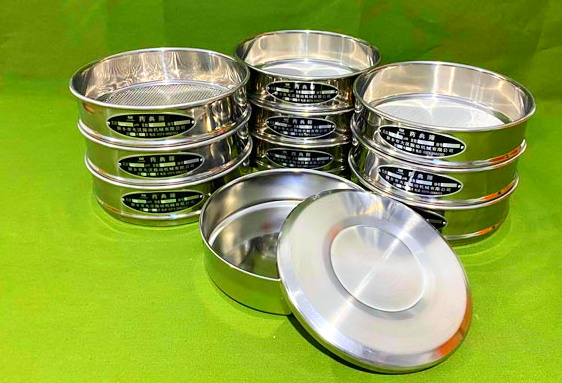
Coarse sieve (round hole): hole diameters are 100mm, 80mm, 60mm, 40mm, 20mm, 10mm, 5mm, 2mm.
Fine sieve (square hole): equivalent hole diameters are 2.0mm, 1.0mm, 0.5mm, 0.25mm, 0.10mm, 0.075mm.
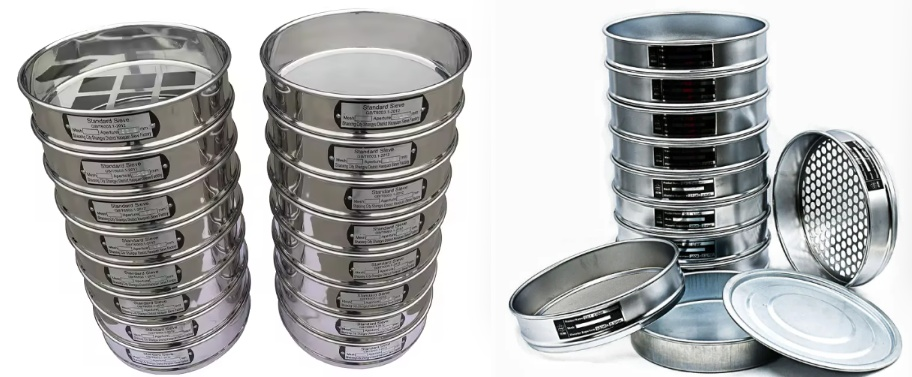
Common apertures of standard soil sieves: 0.074mm, 0.25mm, 0.5mm, 1mm, 2mm, 2.5mm, 3mm, 4mm, 5mm, 6mm, 7mm, 8mm, 9mm, 10mm, 12mm, 13mm, 20mm, 40mm, 60mm.
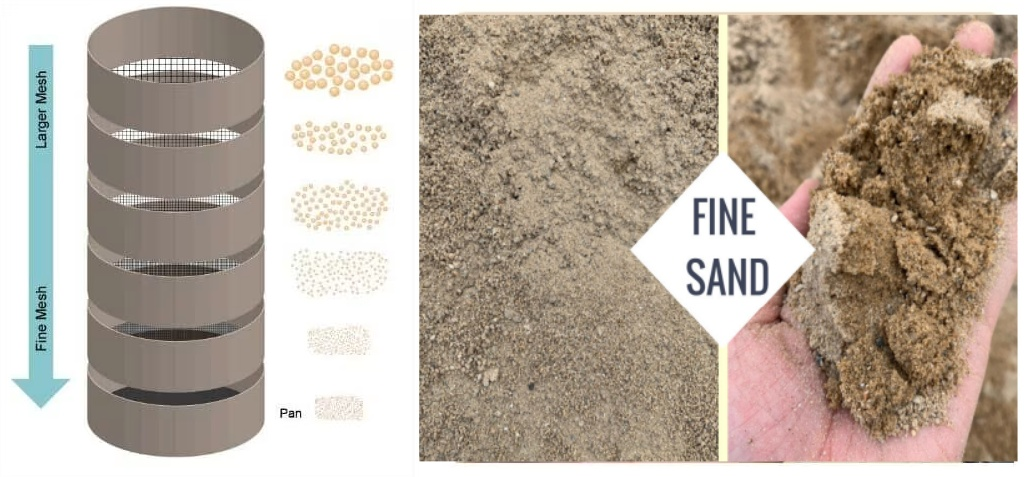
|
Sieve hole size (mm) |
standard mesh number |
sieve size (mm) |
standard mesh number |
|
4.75 |
4 mesh |
1.70 |
12 mesh |
|
4.00 |
5 mesh |
1.40 |
14 mesh |
|
3.35 |
6 mesh |
1.18 |
16 mesh |
|
2.80 |
7 mesh |
1.00 |
18 mesh |
|
2.36 |
8 mesh |
0.850 |
20 mesh |
|
2. 00 |
10 mesh |
0.710 |
25 mesh |
|
0.600 |
30 mesh |
0.212 |
70 mesh |
|
0.500 |
35 mesh |
0.180 |
80 mesh |
|
0.425 |
40 mesh |
0.150 |
100 mesh |
|
0.355 |
45 mesh |
0.125 |
120 mesh |
|
0.300 |
50 mesh |
0.106 |
140 mesh |
|
0.250 |
60 mesh |
0.090 |
170 mesh |
|
0.250 |
60 mesh |
0.0750 |
200 mesh |
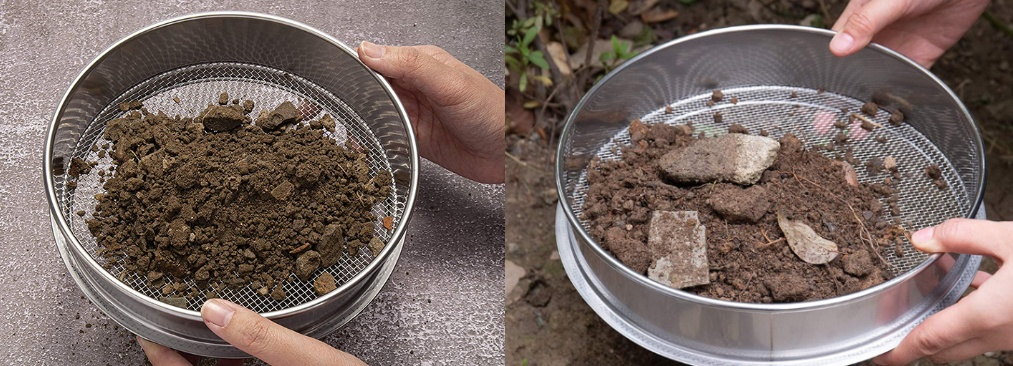
Coarse-grained soil (sand, gravel): 63mm, 31.5mm, 16mm, 8mm, 4.75mm (commonly used to distinguish gravel and sand), 2mm (the boundary between sand and gravel), 1mm, 0.5mm, 0.25mm, 0.125mm, 0.075mm (the boundary between sand and silt)
Fine-grained soil (silt, clay): 0.063mm (the boundary between silt and clay, the commonly used sieve number is 200 mesh), 0.038mm, 0.02mm, 0.002mm (the upper limit of clay particles)
In soil analysis, sieving is a common method used to determine the size distribution of soil particles. According to different standards and analysis purposes, a series of sieves with different apertures will be used.
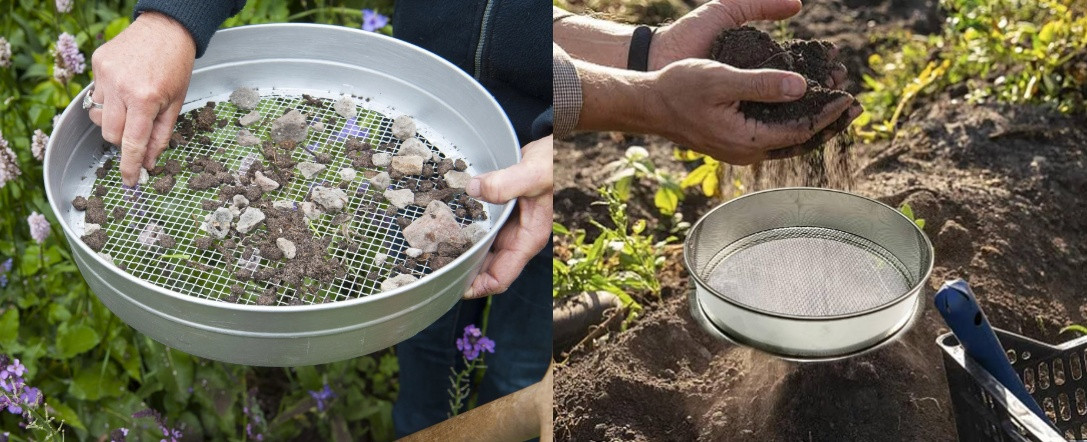
①2 mm sieve hole: This is the most commonly used sieve size in soil sample pretreatment. Soil samples that pass through the 2 mm sieve hole are usually called fine soil and are used for subsequent physical and chemical analysis, such as particle size analysis, organic matter content determination, etc. Particles larger than 2 mm are usually considered gravel or coarse aggregate and are weighed or removed separately in some analyses.
②0.063 mm sieve hole: This is a very important dividing point in soil particle size analysis. Particles larger than 0.063 mm are usually measured by sieving (such as sand). Particles smaller than 0.063 mm (such as silt and clay) are usually measured by Stokes' law to determine their settling velocity due to their small particle size, thereby inferring the particle size.
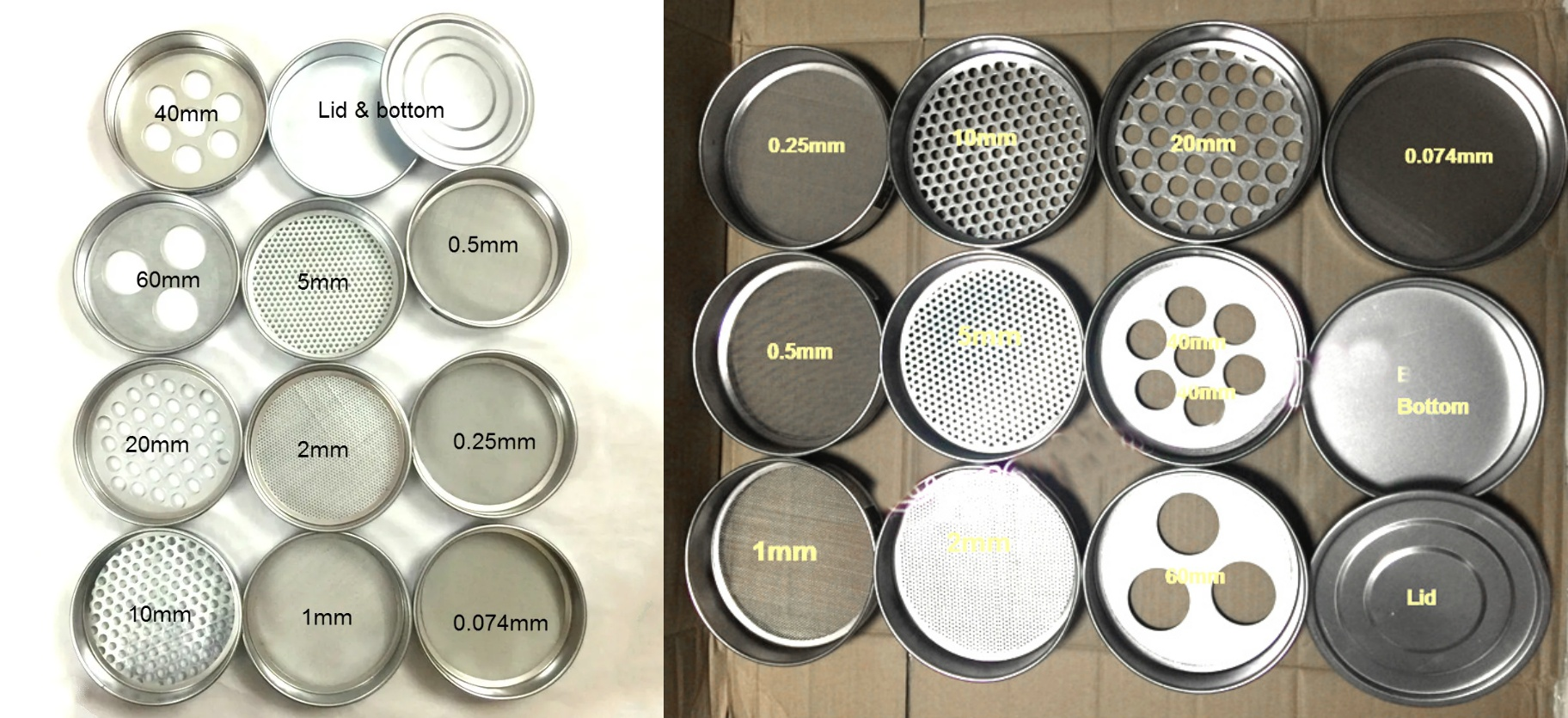
|
Sieve size (mm) |
Corresponding mesh number (approximately) |
Purpose description |
|
2.00mm |
10 mesh |
Separation of gravel and coarse sand |
|
1.00mm |
18 mesh |
Coarse sand screening |
|
0.50mm |
35 mesh |
Medium sand screening |
|
0.25mm |
60 mesh |
Fine sand screening |
|
0.075mm |
200 mesh |
Dividing line: the boundary between sand and silt (fine-grained soil) |
|
0.063mm |
230 mesh |
Silt screening, often used for analysis of finer particles |
Soil sieve size refers to the aperture size of the standard sieve used for soil particle analysis, usually expressed in millimeters or microns. Mesh number is also often used to indicate the coarseness of the sieve, which means the number of holes per inch of length. The larger the mesh number, the smaller the sieve hole.
|
Sieve size (mm) |
Sieve size (μm) |
Approximate mesh size (Mesh) |
Main purpose/corresponding particle level |
Sieve size (mm) |
Sieve size (μm) |
Approximate mesh size (Mesh) |
Main purpose/corresponding particle level |
|
75.0 |
75000 |
3 |
Granite, large pebbles |
63.0 |
63000 |
3.5 |
Pebble |
|
50.0 |
50000 |
4 |
Pebble |
37.5 |
37500 |
5 |
Used upper limit of coarse gravel and engineering filling materials |
|
31.5 |
31500 |
6 |
Gravel |
26.5 |
26500 |
7 |
Gravel |
|
19.0 |
1900 0 |
8 |
gravel |
16.0 |
16000 |
10 |
gravel |
|
13.2 |
13200 |
12 |
gravel |
9.50 |
9500 |
16 |
gravel/coarse sand |
|
6.70 |
6700 |
20 |
coarse sand |
4.75 |
4750 |
4 |
sand upper limit (key sieve), distinguishing gravel from sand |
|
2.36 |
2360 |
8 |
sand |
2.00 |
2000 |
10 |
sand |
|
1.18 |
1180 |
16 |
sand |
1.00 |
1000 |
18 |
sand |
|
0.850 |
850 |
20 |
sand |
0.710 |
710 |
25 |
sand |
|
0.600 |
600 |
30 |
sand |
0.500 |
500 |
35 |
sand |
|
0.425 |
425 |
40 |
sand |
0.355 |
355 |
45 |
sand |
|
0.300 |
300 |
50 |
sand |
0.250 |
250 |
60 |
sand |
|
0.212 |
212 |
70 |
fine sand |
0.180 |
180 |
80 |
fine sand |
|
0.150 |
150 |
100 |
fine sand/powder |
0.125 |
125 |
120 |
fine sand/powder |
|
0.106 |
106 |
140 |
powder |
0.090 |
90 |
170 |
powder |
|
0.075 |
75 |
200 |
upper limit of powder/lower limit of clay (key sieve), distinguish sand/powder from clay |
0.0 63 |
63 |
230 |
silt/clay |
|
0.053 |
53 |
270 |
silt/clay |
0.045 |
45 |
325 |
clay |
|
0.038 |
38 |
400 |
clay |
0.032 |
32 |
450 |
clay |
|
0.025 |
25 |
500 |
clay |
0.020 |
20 |
635 |
clay |
|
0.015 |
15 |
800 |
clay |
0.010 |
10 |
1250 |
clay |
|
0.005 |
5 |
2500 |
colloid |
0.002 |
2 |
6350 |
colloid |
Core sieve hole:
4.75mm (No.4 sieve): This is the key boundary to distinguish gravel from sand. Particles larger than this size are gravel, and particles smaller than this size enter the analysis scope of sand, silt, and clay.
0.075mm (No.200 sieve): This is the key boundary for distinguishing sand/silt from clay. Particles smaller than this size need to be further analyzed by sedimentation, because sieving is inefficient for such fine particles and easily clogs the sieve.
Soil texture classification: The relative percentage of sand, silt, and clay in the soil (usually based on particle size boundaries such as 2mm-0.05mm-0.002mm or 2mm-0.063mm-0.002mm) determines the texture of the soil (such as sand, loam, clay, etc.). The 0.075mm sieve in the table above is one of the important tools for obtaining these percentage data.
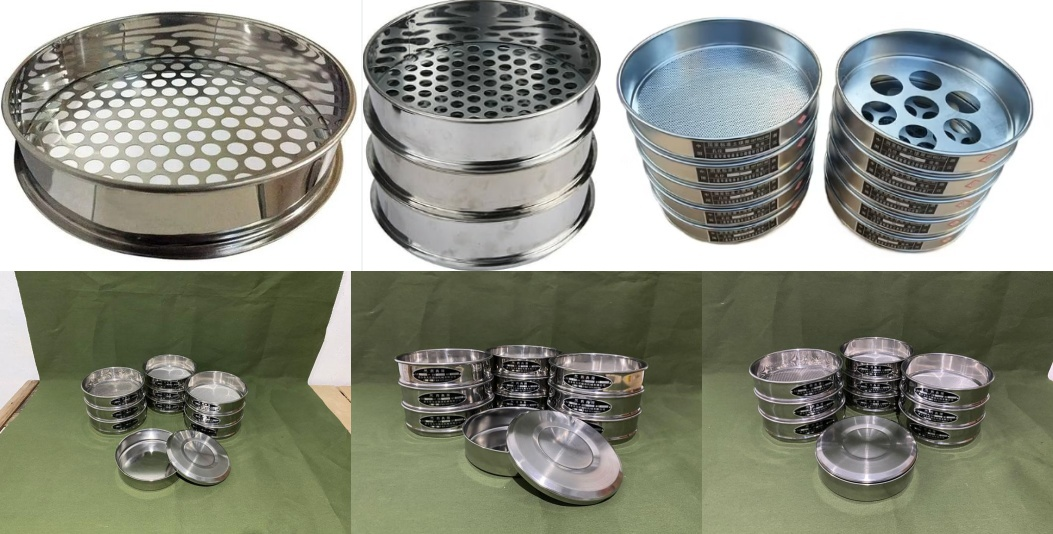
Soil sieve sizes are standardized and serialized, and core sieve holes (such as 4.75mm and 0.075mm) play a vital role in distinguishing soil particles of different particle size levels (gravel, sand, silt, clay). The particle gradation data obtained through sieving analysis is the basic information for understanding and describing soil physical properties, engineering design and agricultural management. The specific sieve size to be selected depends on the purpose of the analysis and the standard specifications to be followed.
Standard Soil Sieve Sizes and Specifications
Standard Soil Sieve is a tool for detecting the particle size distribution and analysis of soil particles larger than 0.075mm in diameter. Standard Soil Sieve Sizes mesh Aperture(...
What is the wet sieving process?
Wet sieving process is a sieving process assisted by a liquid (usually water or a solution containing a dispersant) to more effectively...
Fines content tester can be defined as an instrument used to quantitatively determine the content of fines powder components of a specific fineness...
Micro silica powder particle size analysis test sieve
Micro silica powder, also known as silica fume, is an ultrafine active silica material with a very small particle size, usually between 0.1-0.3 microns, which...
Agricultural gruesos Test sieves
Agricultural gruesos test sieves are experimental equipment used for particle size analysis, grading and testing of agricultural soil, gruesos...
Stainless steel frame and woven cloth
The test sieve is a laboratory equipment used for particle size analysis. Its core components usually include a stainless steel frame and woven cloth (also called a sieve)...
Test sieve sugar powder size detection
Test sieve sugar powder size detection is a key method for evaluating the fineness of sugar powder and its particle distribution. It uses one or...
Jun 18, 2025
Soil sieve size is a key parameter for soil particle analysis, for soil classification or engineering...
Jun 12, 2025
Test sieve sugar powder size detection
Test sieve sugar powder size detection is a physical detection method that uses multiple layers of st...
Jun 10, 2025
Chemical Material Standard Laboratory Vibrating Sifter
Chemical Material Standard Laboratory Vibrating Sifter is a precision equipment used for particle siz...
Jun 10, 2025
The main purpose of the herbal powder lab sieve is to achieve particle size classification and impuri...
![]()
Then we look forward to hearing from you
Contact Us
Industrials
Yanjin county forest park gate to the west 1000 meters north road sitemap
